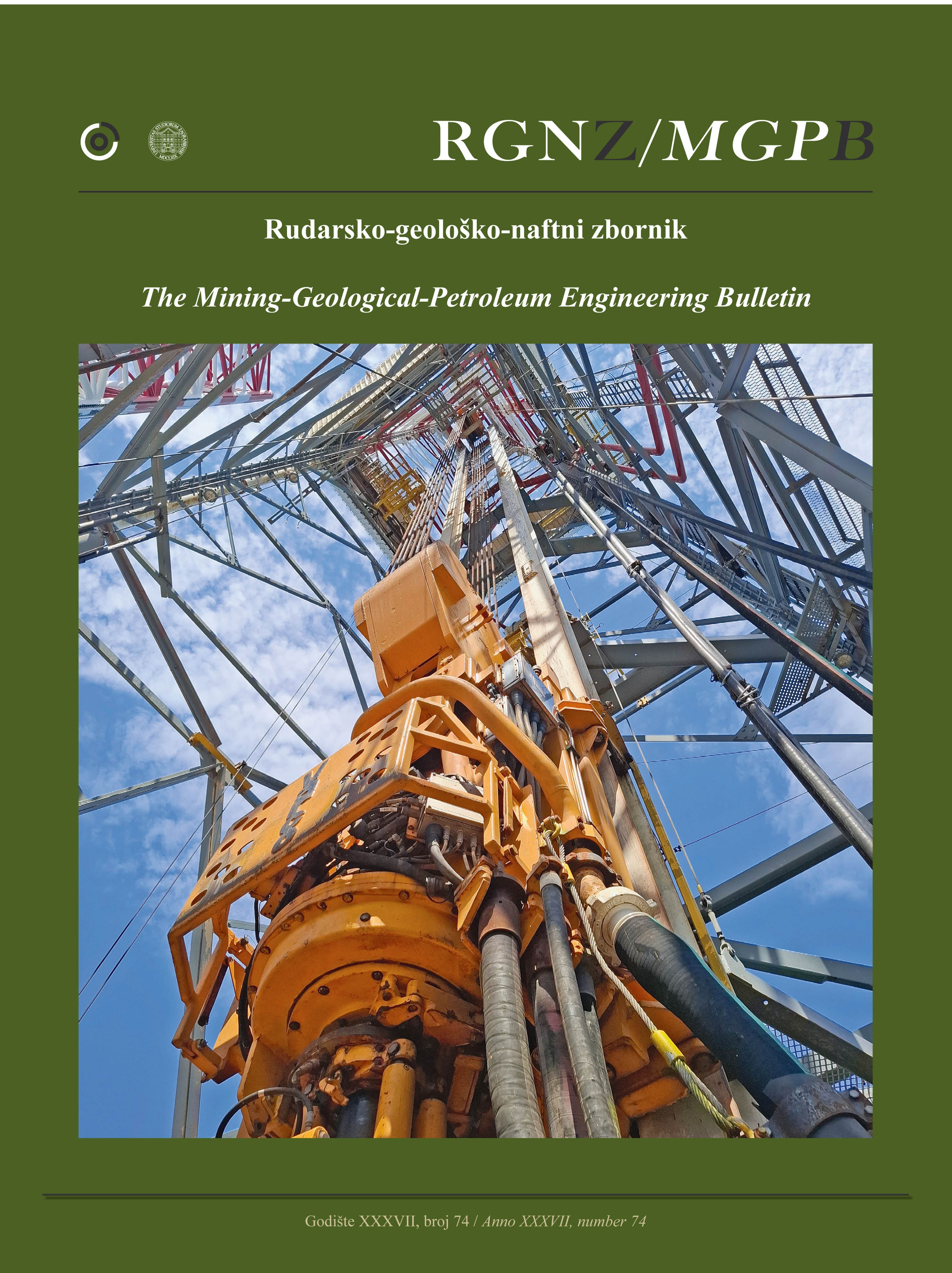Low Frequency Passive Seismic Analysis for Characterizing Hydrocarbon Presence in the Kendal Subbasin
DOI:
https://doi.org/10.17794/rgn.2025.3.5Keywords:
passive seismic, low-frequency, spectral, VHSR, PSDAbstract
This study explores the characteristics of hydrocarbon presence in the Kendal subbasin, Central Java, using low-frequency passive seismic (LFPS) techniques as a direct hydrocarbon indicator. Waveform data were collected in 2024 using five deployed stations, including areas near oil wells, oil seeps, and non-seepage zones, to assess the presence of hydrocarbons trapped within fault-bounded anticlines. The thrust faults in the study area significantly influence the Kerek Formation, creating structural folds that serve as potential hydrocarbon traps. In analysing that potential trap system, the waveform data is processed following the time windowing and bandpass filtering to enhance signal clarity and isolate relevant seismic responses. This study identified significant Power Spectral Density (PSD) anomalies within the 1-4 Hz frequency range, which aligns with anomalies observed in Vertical-to-Horizontal Spectral Ratio (VHSR) data. The consistent occurrence of these anomalies in both PSD and VHSR data highlights the potential of LFPS as a reliable tool for detecting subsurface hydrocarbons in geologically complex regions like the Kendal subbasin. The polarity analysis was also performed, resulting in an average azimuth of 0.430 NNE, with an average dip of 0.680. These results inform us that the hydrocarbon flows from the border fault in the north to the well. This method complements the other geophysical method analysis to find new hydrocarbon opportunities.
Downloads
Published
Issue
Section
License
Copyright (c) 2025 Maman Rohaman, Alfathony Krisnabudhi, Hasan Tri Atmojo, Ikhwannur Adha

This work is licensed under a Creative Commons Attribution 4.0 International License.
Creative Commons-BY
Authors who publish with this journal agree to the following terms:
In agreeing this form, you certify that:
- You read the ethical codex of the RGN zbornik available at journal web.
- You submitted work is your original work, and has not previously been published and does not include any form of plagiarism.
- You own copyright in the submitted work, and are therefore permitted to assign the licence to publish to RGN zbornik.
- Your submitted work contains no violation of any existing copyright or other third party right or any material of an obscene, libellous or otherwise unlawful nature.
- You have obtained permission for and acknowledged the source of any illustrations, diagrams or other material included in the work of which you are not the copyright owner.
- You have taken due care to ensure the accuracy of the work, and that, to the best of your knowledge, there are no false statements made within it.
- All co-authors of this submitted work are aware of, and in agreement with, the terms of this licence and that the submitted manuscript has been approved by these authors.
Publication licence
You retain copyright in your submitted work, according to journal license policy (CC-BY). By signing this form you agree that RGN zbornik may publish it under the publication licence. In summary the licence allows the following:
Anyone is free:
- To copy, distribute, display, and perform the work.
- To make derivative works.
Under the following conditions:
- The original author must always be given credit.
- The work may not be used for commercial purposes.
- If the work is altered, transformed, or built upon, the resulting work may only be distributed under a licence identical to this one.
Exceptions to the licence
In addition to publishing the work printed under the above licence, RGN zbornik will also enable the work to be visible online.
The journal editorial can change the licence rules anytime but it cannot retroactively restrict author(s) rights.


